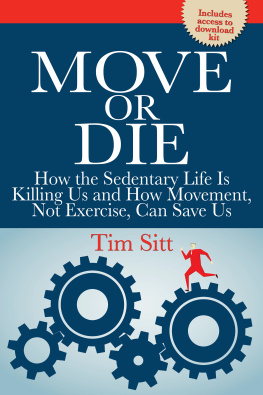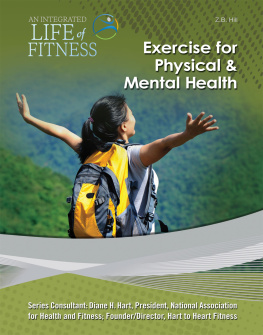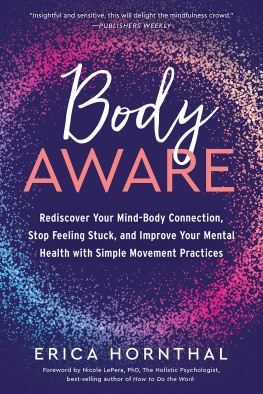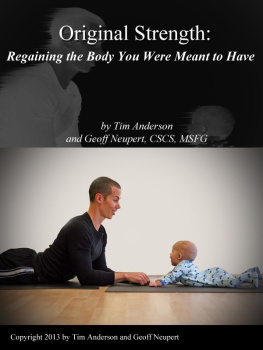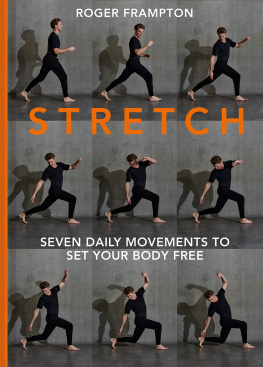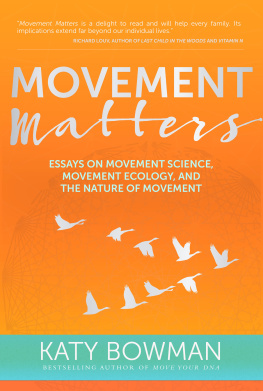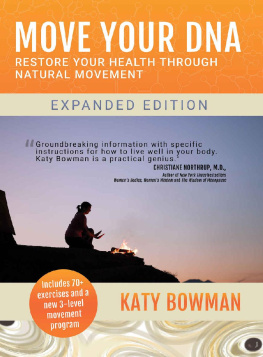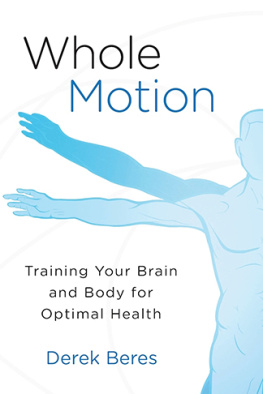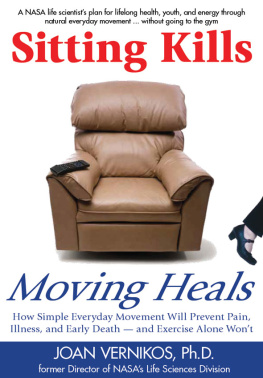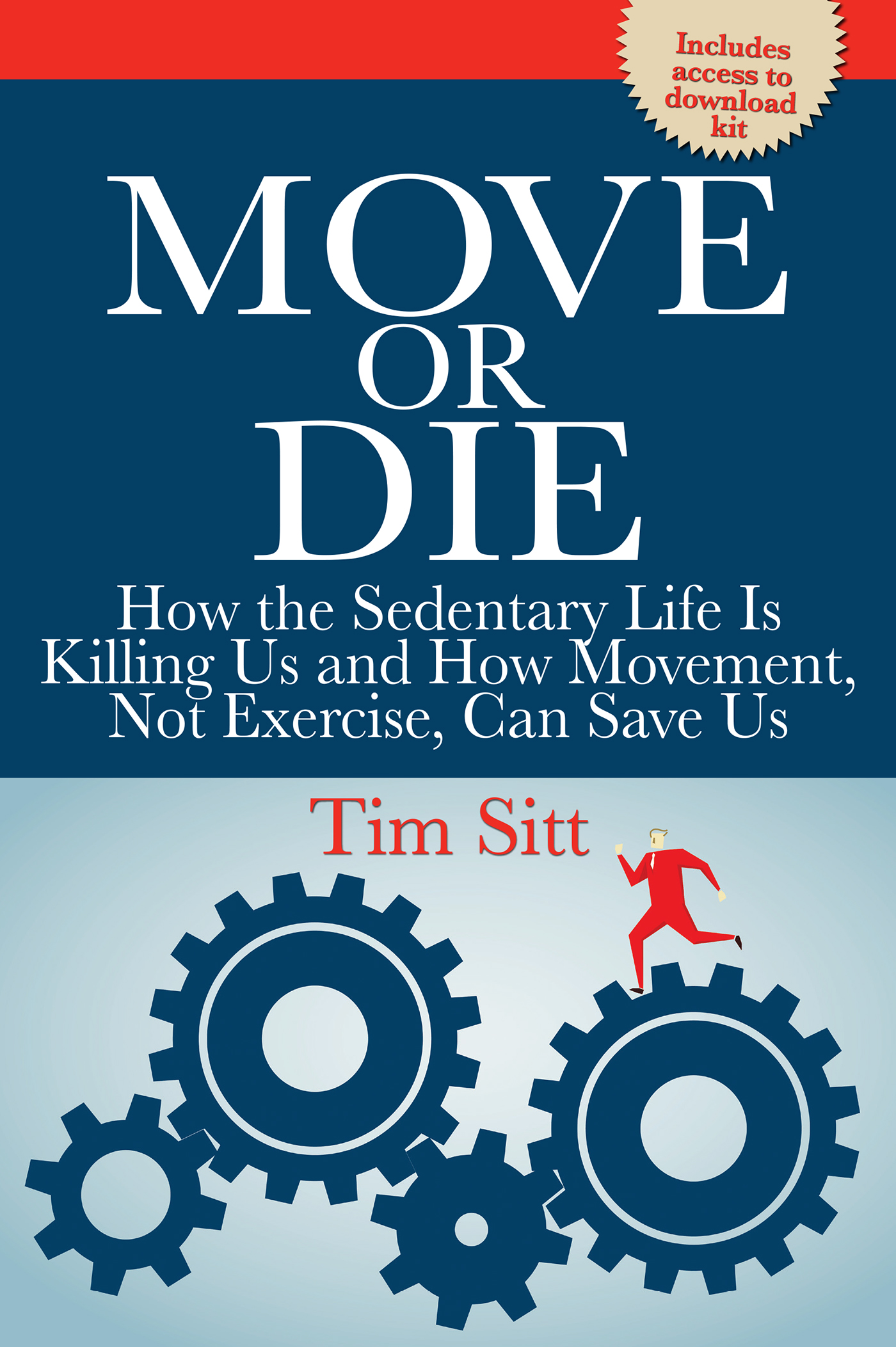Introduction: The Power of Movement
At some point, all of us have struggled to maintain our health whether trying to stay fit, recovering from illness, avoiding illness, or taking care of our mental health. Move or Die focuses on time spent sitting, not as a problem to eradicate, but as an opportunity: Start moving, and you can lead a healthier and happier life.
By judo-flipping our sedentary time, we can transform sitting time into an opportunity to enhance our health in ways that were not possible before. With a healthier workforce, organizations and companies experience more productivity and by extension, profit.The most difficult part is changing your mindset. After that, all you need to do is move.
This book is your guide to rethinking popular approaches to health, then opening the door to a new world of movement, different from traditional forms of exercise. It shows you how to incorporate movement throughout your day, elevating your energy, mood, and health.
By now, you may have heard that sitting is the new smoking. A large and growing body of research connects prolonged sitting and sedentary behavior with serious health problems like cancer, diabetes, obesity, and more. However, prolonged sitting doesnt only impact our physical health. The more we sit the more other aspects of us become rigid, like behavior, thinking, communication, and relationship patterns. The problem of being sedentary is a symptom of a larger problem: a generalized stagnation resulting in the stiffening of bodies, the fixation of minds, the staleness of relationships, and the eventual disruption of growth throughout entire organizations.
This book introduces movement as a mindset. It will help you develop the skills to become aware of unhealthy patterns and help you explore choices to move towards healthier possibilities that allow for growth. Central to this work is the creation and pursuit of freedom of movement. Freedom is at the heart of many of our deepest values: freedom of choice, freedom to love whom we wish, financial freedom, freedom of speech, freedom of religion, and the freedom to vote. We have yet to prioritize our bodies and movement in the same way, particularly in our working environments.
The freedom to move our bodies is central to experiences of optimal health. Movement is the key to accessing resources, creativity, and innovation that can otherwise be trapped when our bodies and our minds are locked in a sitting position for hours on end. When I am discussing movement, I am not just talking about physical movement but also psychological, relational, and organizational.
The relationship between physical health and other aspects of our lives should be obvious. We exist within bodies so it makes sense that if our bodies are stuck, other areas of our lives get stuck as well. Sitting down for long periods reduces blood flow and the production of hormones and neurochemicals. This has an impact on our mental health.
My hope is to inspire you to incorporate the power of movement into your day so you can transform your mind, body, relationships, and organizations by adding new energy, new perspectives, new strength, and an authentic experience of health. I will help you do this by teaching a philosophy of health called the Freedom of Movement. Life is a complex process that requires constant learning and growing: the freedom to move ones mind, body, and relationships is an important method for coping with challenges and facilitating growth.
1. The Philosophy of the Freedom of Movement
The power of movement is found in the freedom it can create for people who use and integrate it into their lives. I have discovered the freedom of movement in my own life. It has been a force that has given me more health, energy, and a deeper connection to myself. Here are a few of the lessons that will be elaborated upon throughout this book:
There is no one right way to move. Be fluid and willing to experiment and explore until you find a way to incorporate movement that fits you and your life.
There is always a choice as it relates to your health and body. People do not function in a healthy way when things are forced or when there are rigid rules of what they should or have to do. Having to sit still is one of those rigid rules that needs to be transformed and made into a choice instead of a mandate.
Take responsibility for your health. No person, tool, gadget, or program can help move your body for you. Each individual needs to take responsibility to move. No one can be moved.
Have no set patterns. Focus on keeping Freedom of Movement in all areas of your life. Avoid patterns which create stagnation. Create new moves every day as well as new thoughts, new relationships, and new methodologies. Keep things fresh. Keep focused on your purpose, which is your mission and vision, and update as needed.
Your body is a part of nature so it contains a wealth of resources and wisdom. It is naturally oriented to move towards growth and healing. Simply learning to listen to its needs and responding appropriately is a large step towards health.
Different domains of health interact dynamically so changes in one realm can lead to changes in the others, whether intended or not. For example, freeing the body can also free ones thinking.
This book helps you transform your sedentary time into an opportunity to improve your health through information, techniques, and skills that will empower you to incorporate movement throughout your day. While the practices are simple and usually only take a minute at a time, they challenge old beliefs and patterns. By learning the power of movement and the freedom it can provide, you will have more control of your mind, your choices and, most importantly, your health.
2. The Problem of Sitting Is a Problem of Not Listening to the Body
According to the Center for Disease Control and Prevention (CDC), chronic diseases and conditions such as heart disease, stroke, cancer, diabetes, obesity, and arthritis are among the most common, costly, and preventable of all health problems. Research has shown significant connections between prolonged sitting and many chronic illnesses.
Beyond sitting, I believe that the source of these health problems begins when people disconnect themselves from their bodies. The position of sitting and the problem of being sedentary exemplifies this pattern of ignoring the body. The longer we sit hunched over keyboards facing screens without movement, the more unfamiliar we become with our bodies, their signals and needs. This internal pattern of being disconnected and not listening to our bodies can become a relationship pattern when individuals stop communicating their needs to their colleagues and managers within an organization or any system.
This dynamic of not listening to ones body perpetuates poor self-care because people begin to disconnect and distrust themselves and their environment. People with this kind of closed behavior become silent not only on matters that impact them personally like their health, but also on issues that directly impact the health of any business with which they are involved.
Without the ability to listen to our bodies and the ability to communicate openly with others, problems and concerns both personal and professional remain hidden until it is too late and employees experience burnout and need to take stress leave. Some companies try to incorporate health and wellness programs, but it is not yet well understood how health practices can be incorporated into the flow of daily work. The approaches are often singular, as they focus on the body separate from the activities of work. For example, offering gym memberships, or installing a gym in the space, or bringing in a yoga instructor. The body and health are still addressed in isolation from the rest of what is happening in the workplace. A healthy body, primarily through working out and going to the gym, becomes another pressure-filled task amongst an ever growing to-do list. It often falls to the bottom of that list instead of being integrated naturally into the flow of daily activities happening in the workplace.

